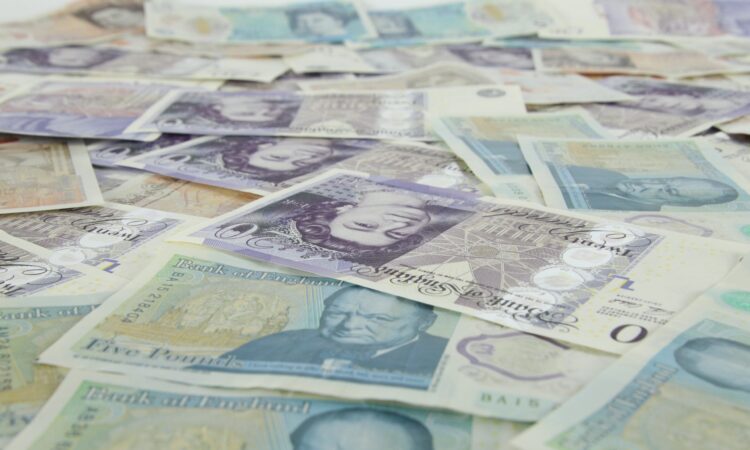
At the start of 2022, the UK economy was expected to grow at a much faster pace than Australia, and the value of the Great British pound (GBP) against the Australian dollar (AUD) was tipped to strengthen.
However, last year turned out to be a particularly turbulent one for the United Kingdom, with record-high inflation worsening the cost-of-living crisis, Brexit continuing to serve as a de-stablising political force and Russia’s invasion of Ukraine driving up energy prices. Kwasi Kwarteng’s September ‘mini-budget’ of hefty tax cuts and spending promises was a major shambles, causing not only the pound to fall to its lowest-ever level against the greenback—almost reaching parity—but the resignation of PM Liz Truss.
Currency exchanges are often volatile and can change in unexpected ways due to geopolitical events.
Nonetheless, if you need to exchange Australian dollars (AUD) for GBP, understanding the GBP to AUD forecast will help you decide when is most favourable to do so.
The GBP to AUD rate sets out how many Australian Dollars can be bought for 1 British Pound. As of 24 January 2023, £1.00 (GBP) was equal to $1.76 AUD.
Naturally, buyers of AUD want a high rate and buyers GBP want a low rate.
Related: AUD to USD Forecast: Dollar Could Fall Further Amid US Recession Fears
Great British Pound: Current Outlook in 2023
Since the decision to leave the European Union was announced after the Brexit referendum of 2016, the value of the pound has been in decline. The UK was also particularly bad hit by the Covid-19 pandemic, in comparison with Australia.
After an extraordinarily difficult year in 2022, there is cautious optimism that the GBP will strengthen this year—albeit only modestly.
“While 2023 is not expected to be as turbulent a year for the pound as 2022, which saw three UK prime ministers, four chancellors, and a record low against the USD, risks are still tilted to the downside,” says Fiona Griffiths, currency expert at The Currency Shop, which is powered by financial technology company, Wise.
“The Bank of England has warned that it is likely to underwhelm with rate hikes as the UK enters a recession that could last until 2024.”
Economic growth will remain hampered and inflation high until the energy crisis eases – however this is to a large degree outside of domestic control, with Russia’s invasion of Ukraine driving up energy prices.
What Drives the Australian dollar?
The AUD is what is known as a commodity currency, in that it aligns itself with the world prices of primary commodity products. Australia relies on the export of certain materials such as coal and iron ore for a substantial part of its income.
“Given that China is the world’s largest consumer of commodities, and Australia’s largest trading partner, the health of the Chinese economy can be a key influence on AUD,” Griffiths says.
“The Australian dollar was weighed down in 2022 by global recession fears and the zero-Covid policy in China, its largest trading partner.”
She adds that while a recession is still expected in Europe and the United States, China’s easing of its ‘zero Covid-19’ policy with the prolonged lockdowns and travel bans, could be a boon for Australia.
Furthermore, recent high-level visits between Australia and Chinese leaders appeared to signify that trade embargoes against Australian products such as wine will be reconsidered.
Related: USD to AUD: USD to Remain Strong in Face of Global Shocks
GBP to AUD: Six-Month Forecast
There is little to indicate a large bounce back for the GBP in the first half of 2023.
“With a recession looking almost impossible to avoid and inflation still in double digits, the near-term outlook for the UK economy is rather bleak,” says Griffiths. “This could keep the pound under pressure in the first half of the year.”
However, she adds that there is some light on the horizon. Griffiths believes that restored political credibility and a resilient jobs market could go some way to limiting losses in GBP.
GBP to AUD Long-Term Forecast
Beyond 2023, the forecast for the GBP is noticeably brighter.
By 2024, inflation in the UK is expected to return to target levels set by the Bank of England. Along with a recovery in economic growth and a potential resolution to the Brexit Northern Ireland protocol, the pound could see a “strong recovery,” predicts Griffiths.
Featured Partner
The power of the €EUR or the endurance of the $USD?
Explore a wide variety of currency investment opportunities on eToro
eToro AUS Capital Ltd ACN 612 791 803 AFSL 491139. OTC Derivatives are speculative and leveraged. Not suitable for all investors. Capital at risk. See PDS and TMD



